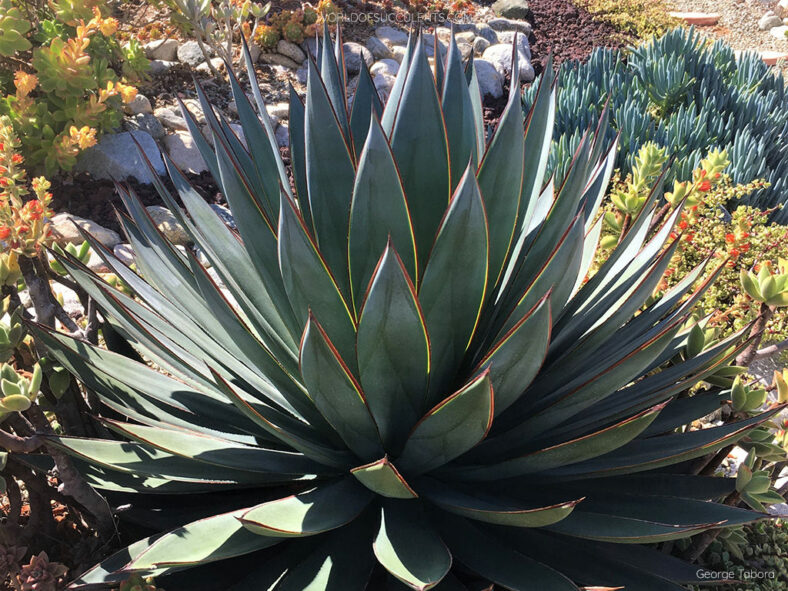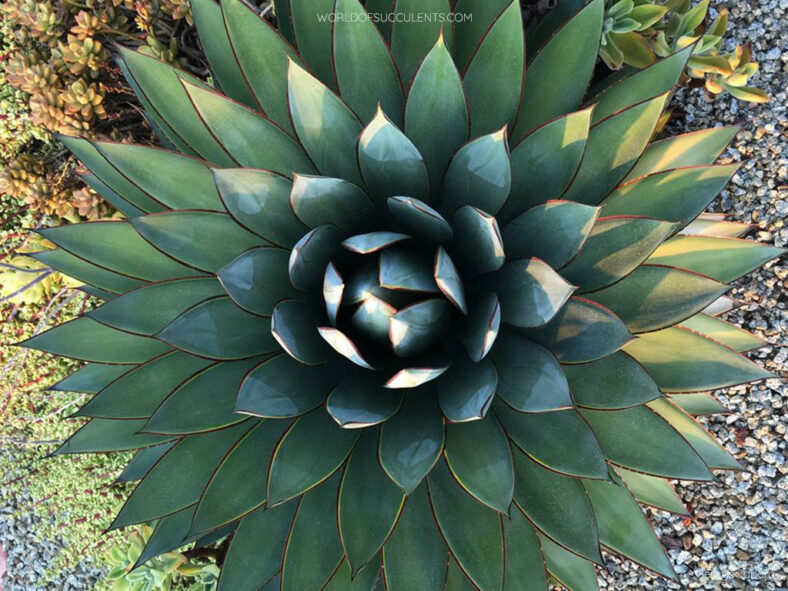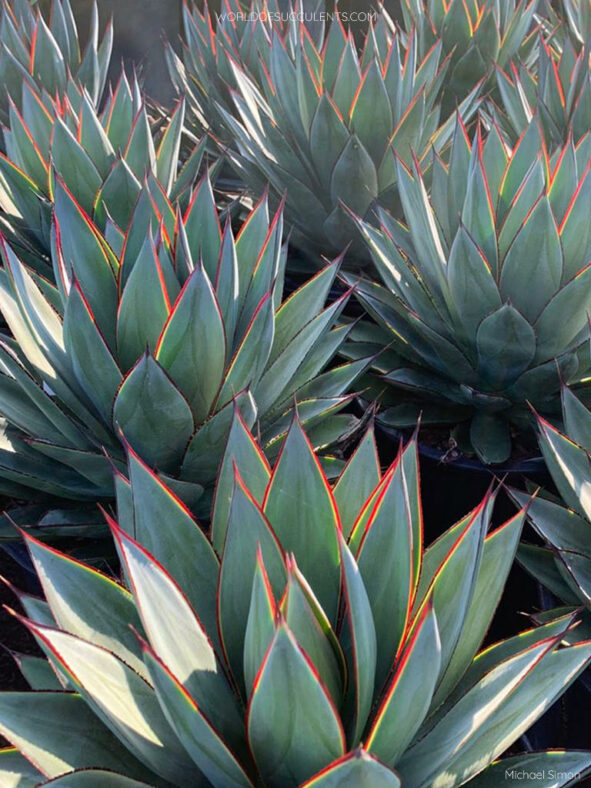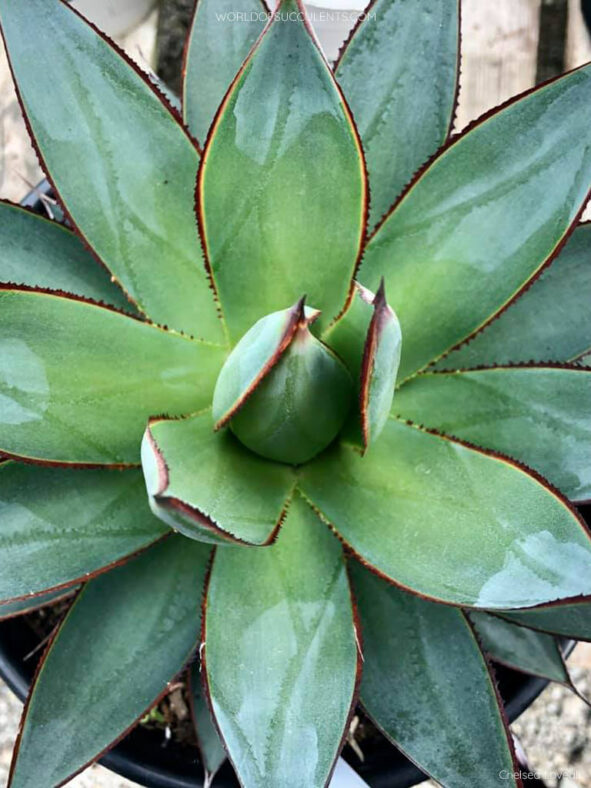Agave 'Blue Glow' is a popular hybrid with a phenomenal architectural appearance.
Scientific Name
Agave 'Blue Glow'
Synonym(s)
Agave 'Shaka Zulu'
Scientific Classification
Family: Asparagaceae
Subfamily: Agavoideae
Genus: Agave
Origin
Agave 'Blue Glow' is a hybrid created by Kelly Griffin while he worked as the Curator of Xerophytes at Rancho Soledad Nurseries in Rancho Santa Fe, California, United States. It is a result of a cross between Agave attenuata and Agave ocahui.
Description
Agave 'Blue Glow', also sold as Agave 'Shaka Zulu', is a stunning succulent that forms a solitary, beautifully symmetrical rosette of chalky blue-green leaves with thin bright red margins edged with an even thinner yellow line. The rosette grows slowly and can reach up to 2 feet (60 cm) in height and 3 feet (90 cm) in diameter. The leaves are lance-shaped, measuring up to 18 inches (45 cm) long and 1.5 inches (3.8 cm) wide, and have finely toothed margins and a sharp red terminal spine. When backlit by the sun, the red and yellow colors on the margins of the leaves are particularly showy.
This plant is monocarpic, meaning the rosette blooms once and then dies, typically after 10 to 15 years. It sends up an erect, unbranched spike that can grow up to 10 feet (3 m) tall. The flowers are yellow to greenish-yellow, up to 3 inches (7.5 cm) long, and appear clustered along the end of the spike, usually in summer.
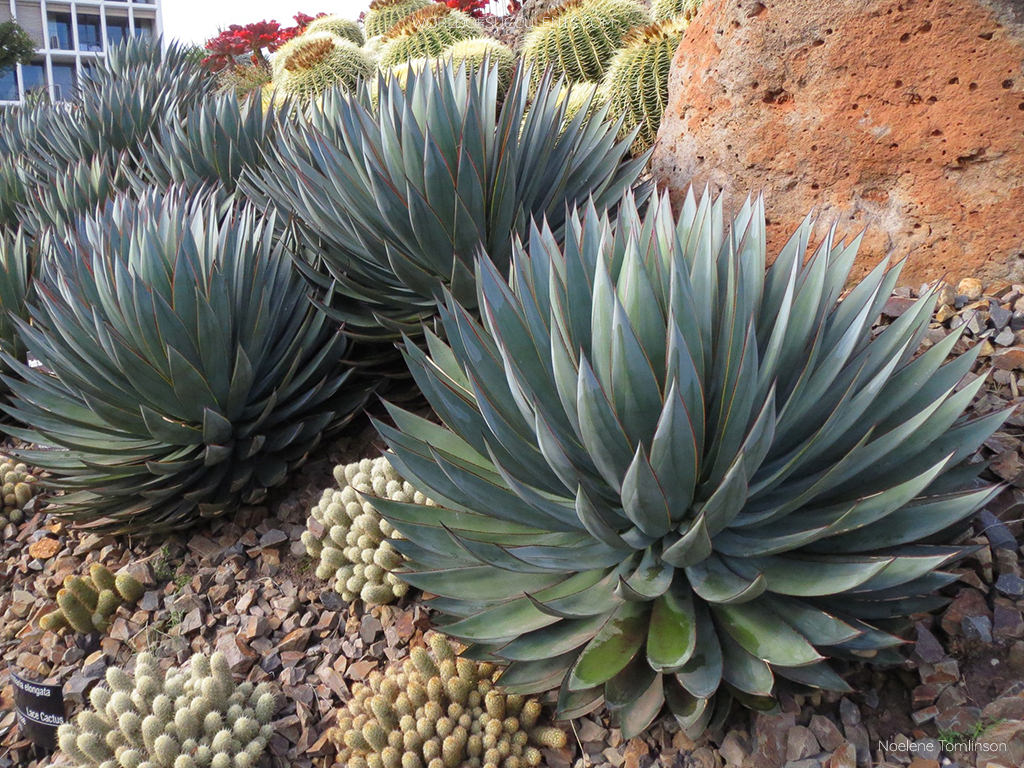
How to Grow and Care for Agave 'Blue Glow'
Light: For optimal growth, Agave 'Blue Glow' requires full sun to partial shade. If you are growing it indoors, choose a sunny window with as much sunlight as possible. From spring to fall, it enjoys being outside.
Soil: This plant can tolerate most soil as long as it has good drainage, but it thrives in sandy or rocky soil.
Temperature: Agave 'Blue Glow' prefers warm temperatures during the growing season and cooler temperatures while resting in winter. It grows best in USDA Plant Hardiness Zones 9a to 11b, with average minimum winter temperatures ranging from 20 to 50 °F (-6.7 to 10 °C).
Watering: To keep your Agave 'Blue Glow' healthy, water it thoroughly when the soil becomes dry from spring to fall. In winter, water it sparingly, about once a month. If you have the plant in a container, it will require more frequent watering than plants in the ground.
Fertilizing: In the spring, during the first two years, give the plant a small amount of fertilizer. After that, the established plant will take care of itself.
Repotting: If you notice your Agave 'Blue Glow' becoming pot-bound, repot it with fresh soil in a new pot slightly larger than the old one. Give the plant a week or so to readjust before you water it again.
Propagation: Since it has a solitary growth habit, this plant can only be propagated by seeds.
Learn more at How to Grow and Care for Agave.
Toxicity of Agave 'Blue Glow'
Agave 'Blue Glow' is not toxic to humans but may be mildly poisonous to children and pets.
Links
- Back to genus Agave
- Succupedia: Browse succulents by Scientific Name, Common Name, Genus, Family, USDA Hardiness Zone, Origin, or cacti by Genus
Photo Gallery
Click on a photo to see a larger version.
